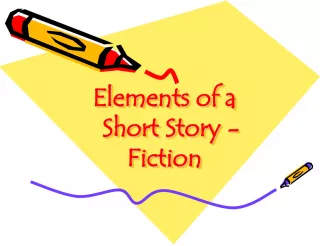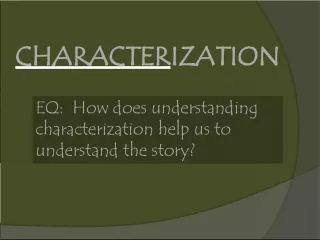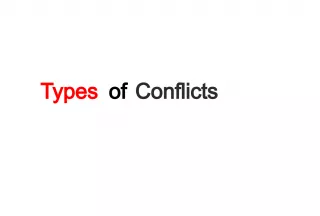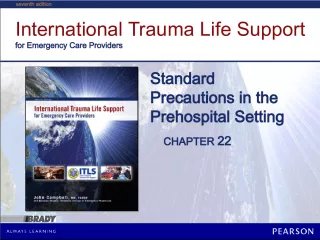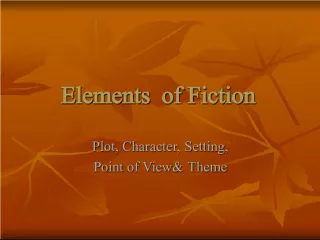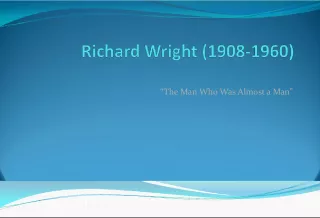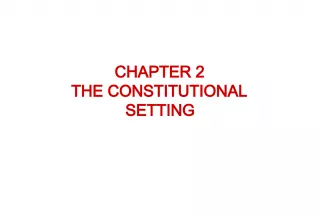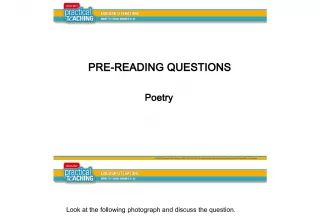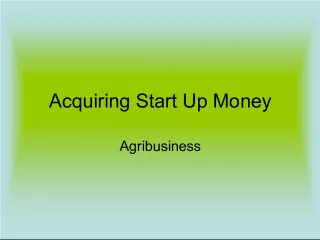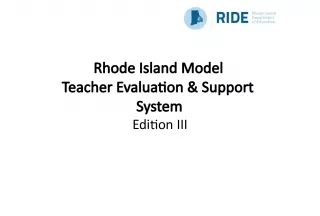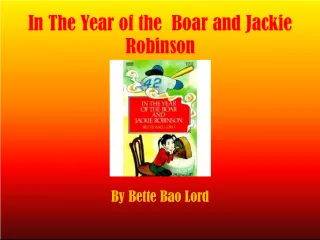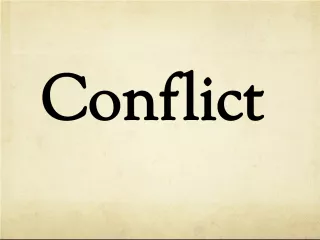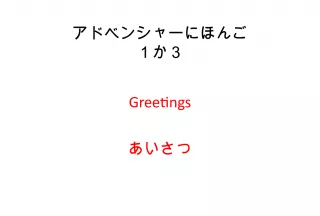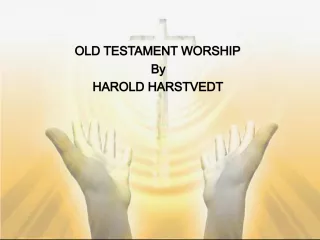Understanding Setting in a Story
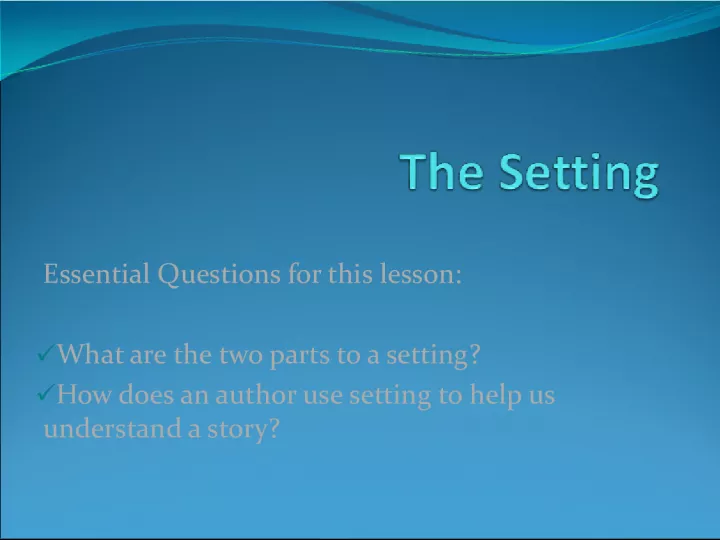

In this lesson, we will explore the two parts of a setting - time and location. We will also examine how authors use setting to help readers understand a story. The setting of a story refers to
- Uploaded on | 3 Views
-
 soham
soham
About Understanding Setting in a Story
PowerPoint presentation about 'Understanding Setting in a Story'. This presentation describes the topic on In this lesson, we will explore the two parts of a setting - time and location. We will also examine how authors use setting to help readers understand a story. The setting of a story refers to. The key topics included in this slideshow are . Download this presentation absolutely free.
Presentation Transcript
Slide1Essential Questions for this lesson: What are the two parts to a setting? How does an author use setting to help us understand a story?
Slide2The setting The setting is the time and location in which a story takes place. When and Where? For some stories, the setting is very important while others it is not so important. http://www.school-clipart.com/_small/0511-0806-1016-3456.jpg
Slide3Aspects of a story’s setting1. Place – geographical location . Where does the action of the story take place?
Slide4Aspects of a story’s setting2. Time – When is the story taking place? (historical period, time of day, year etc.
Slide5Aspects of a story’s setting3. Weather conditions – Is it rainy, sunny, stormy, etc?
Slide6Aspects of a story’s setting4. Social conditions – What is the daily life of the character like? Does the story contain local color (writing that focuses on the speech, dress, mannerisms, customs etc. of a particular place?
Slide7Aspects of a story’s setting5. Mood or atmosphere – What feeling is created at the beginning of the story? Bright and cheerful? Dark and frightening?
Slide8Aspects of a story’s setting1. Place – geographical location . Where does the action of the story take place? 2. Time – When is the story taking place? (historical period, time of day, year etc. 3. Weather conditions – Is it rainy, sunny, stormy, etc? 4. Social conditions – What is the daily life of the character like? Does the story contain local color (writing that focuses on the speech, dress, mannerisms, customs etc. of a particular place? 5. Mood or atmosphere – What feeling is created at the beginning of the story? Bright and cheerful? Dark and frightening?
Slide9http://www.ancienthistoricalsociety.org/images/AfricanKingandQueen.jpg http://www.wisebread.com/files/fruganomics/imagecache/blog_i mage_full/files/fruganomics/blog-images/depression-family-3.jpg http://thumb1.visualizeus.com/thumbs/09/07/03/bright,landscap e,nature,neat-7b77d983f121fc6a04a175cf861cd98a_m.jpg pabs.us http://earthscience.files.wordpress.com/200 7/05/tornado.jpg http://img.villagephotos.com/p/2005- 3/971607/3dclocks.jpg http://www.eurograduate.com/images/articl es/news/parthenon-and-the-acropolis- landmark-1.jpg http://www.primetravels.com/PackageImag es/691/grand-canyon.jpg http://www.bbc.co.uk/nottingham/content/ images/2005/09/17/sheila_norton_title_anci ent_oak_of_sherwood_forest_470x336.jpg http://www.depauw.edu/photos/PhotoDB_Repo sitory/2007/3/House%20Clip%20Art.gif
